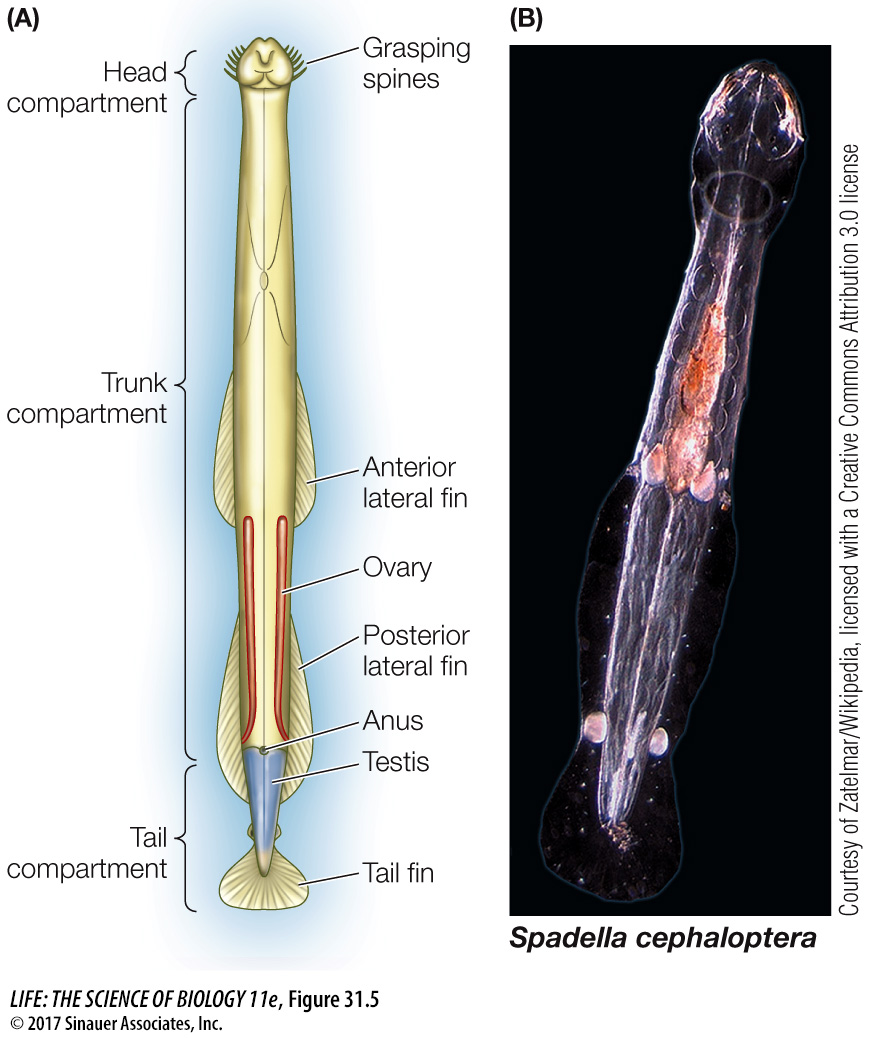Arrow worms retain some ancestral developmental features
Nearly all triploblastic animal groups can be readily classified as either protostomes or deuterostomes, but the evolutionary relationships of one small group, the arrow worms, were debated for many years. The blastopore of arrow worms develops into an anus (as in deuterostomes), but they have ventral nerve cords and spiral cleavage (as in many protostomes). Recent studies of gene sequences, however, clearly identify arrow worms as protostomes. There is still some question as to whether they are the closest relatives of the lophotrochozoans (as shown in Figure 31.1) or possibly the sister group of all other protostomes.
The arrow worm body is divided into three compartments: head, trunk, and tail (Figure 31.5). The body is transparent or translucent. Most arrow worms swim in the open sea. A few species live on the seafloor. Their abundance as fossils indicates that they were common more than 500 million years ago. The 180 or so known living species of arrow worms are small enough—

Arrow worms are hermaphroditic; that is, each individual produces both male and female gametes. In most species, eggs are fertilized internally following elaborate courtship between two individuals, although some species can self-
Arrow worms are stabilized in the water by means of one or two pairs of lateral fins and a tail fin. They are major predators of planktonic organisms in the open ocean, ranging in size from small protists to young fish as large as the arrow worms themselves. An arrow worm typically lies motionless in the water until water movement signals the approach of prey. The arrow worm then darts forward and uses the stiff spines adjacent to its mouth to grasp its prey.